Mango sago is a refreshing Cantonese dessert made with fresh mangoes and small tapioca pearls. It’s the perfect light and fruity pudding or drink. It’s so easy to make at home with only 4 ingredients and a blender!
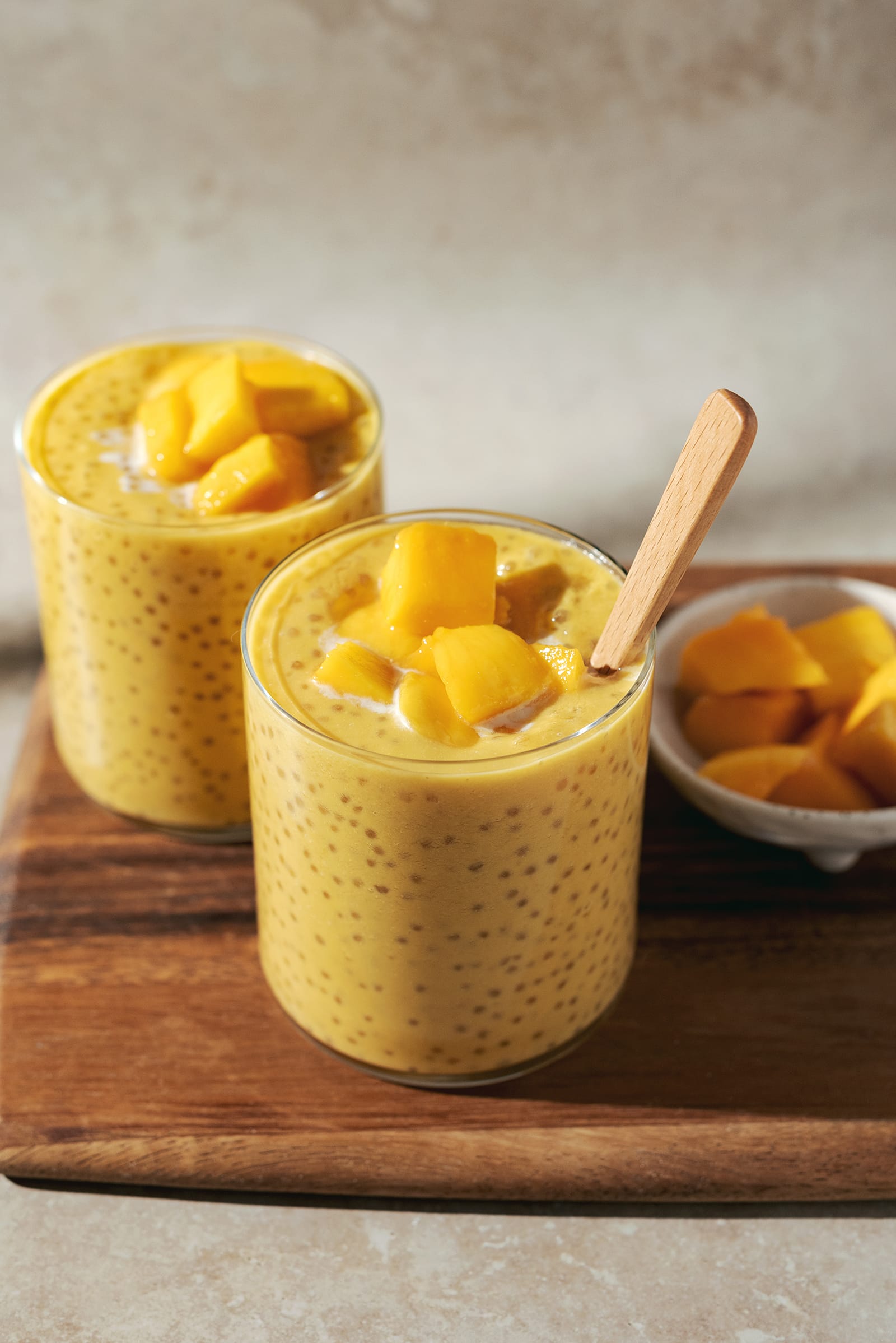
Mango sago is one of my favourite Cantonese desserts, especially after a big meal at a Chinese restaurant. It’s a perfect balance of fruity, sweet, and creamy without being heavy like a cake or other typical desserts.
If you’ve never had mango sago before, it’s like a mix between a pudding and a smoothie. If you like the tapioca pearls in bubble tea, you’ll love mango sago with its tiny tapioca pearls. When topped with coconut milk and more fresh mangoes, this becomes such a quick and easy dessert to make that also looks delicious and inviting.
Jump to:
What is mango sago?
Mango sago is a Cantonese dessert originating from Hong Kong. It’s a type of ”tong sui” (literal translation: sugar water) - a sweet soup or custard served hot or cold at the end of a meal in Cantonese cuisine. Mango sago is served cold and is particularly popular in hot weather.
Mango sago is made by blending together fresh mangoes, coconut milk and condensed milk and then adding tiny tapioca pearls or sago (more on the differences between the two below!). It’s also common to add pomelo granules on top as a mango pomelo sago. The tapioca thickens the soup up and adds a fun bubbly texture to each bite. These small tapioca pearls are not chewy, unlike large tapioca pearls in bubble tea or boba. Instead, they have a soft, jelly-like texture that melts away in your mouth.
Is sago the same as tapioca?
Technically, sago and tapioca are different but the terms are often used interchangeably. Real sago is made from the starch of the sago palm whereas tapioca is made from the starch of the cassava root. Most desserts made with sago are actually referring to tapioca pearls, mainly because sago is difficult and expensive to produce. Tapioca has long been used as a substitute for real sago but the name ”sago” has stuck over time.
Real sago is brown in colour and varies in size due to the hand-rolling process. Tapioca pearls are white in colour and uniform in size. Mango sago is actually made with tapioca pearls despite the name. In this recipe, I use both terms interchangeably but just keep in mind that we are using tapioca pearls.
Why you’ll love this recipe
- You only need 4 ingredients!
- You can use fresh or frozen mangoes in this recipe so you can enjoy mango sago even when mangoes are not in season.
- This recipe is so easy to make and low maintenance to serve. You can easily make a large batch for many portions all at once.
- It’s so delicious, light, and refreshing!
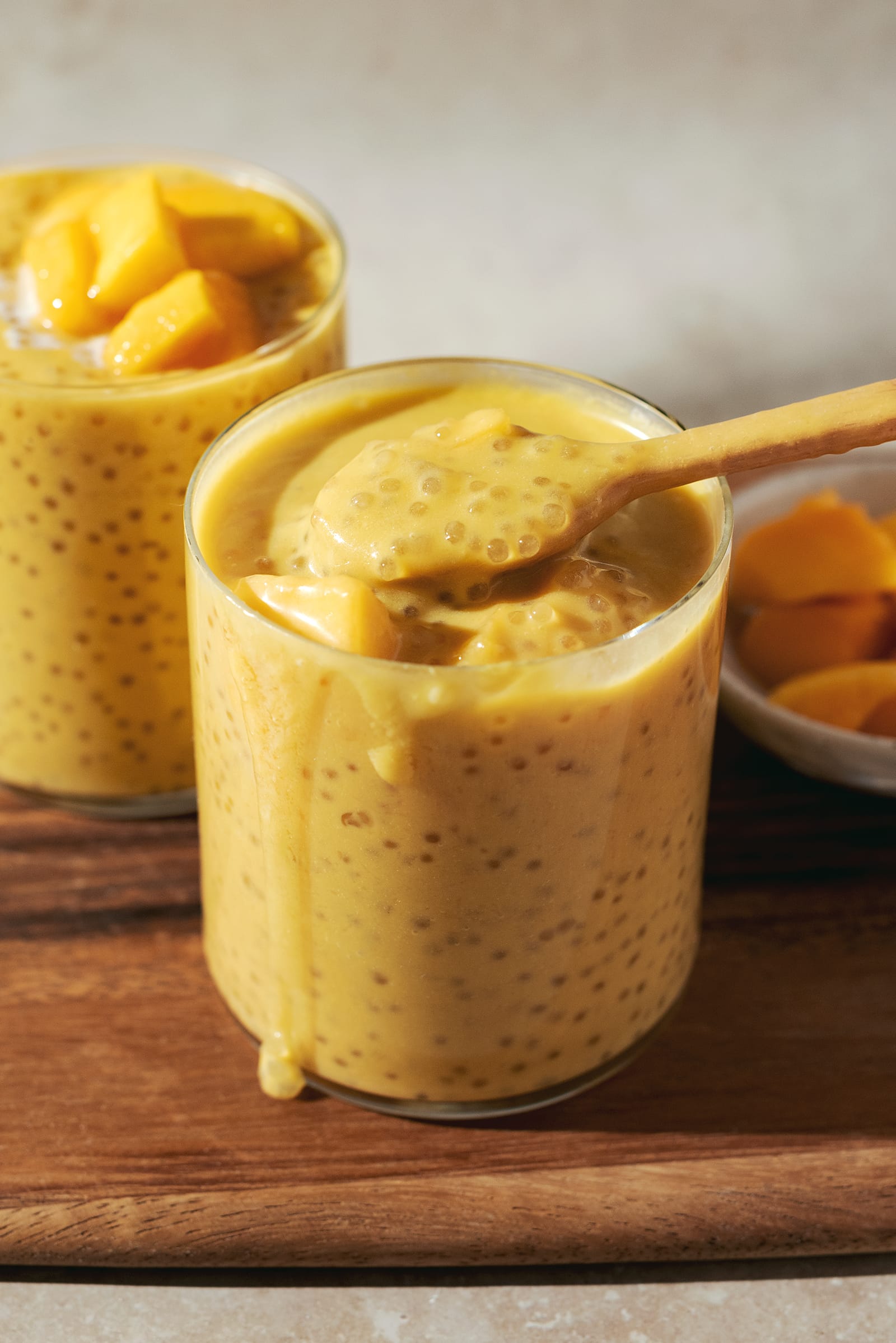
Ingredients
- Small tapioca pearls - These are also called sago. You can typically find them at Asian grocery stores. Look for a small clear bag of tiny white balls, usually found in the same section as rice flours and tapioca starch.
- Mangoes - You can use fresh or frozen mangoes but I would highly recommend fresh ripe mangoes for the sweet mango flavour. You’ll need about 5-6 small mangoes or 4 large mangoes. Peel and cut them into rough chunks. If you’re using frozen mangoes, let them fully thaw at room temperature before blending.
- Coconut milk - You’ll need 1 can of coconut milk. I prefer regular full-fat coconut milk.
- Condensed milk - This is your sweetener and it also adds a great flavour that you can’t get from regular sugar. Adjust the amount you add to taste.
How to make mango sago
Cook the sago - Bring a large pot of water to a boil. Add in the sago and stir immediately. Lower the heat to a simmer and cook sago for 10 minutes. Remove from heat, cover, and let sit for 10 minutes until the sago becomes completely translucent throughout.
Drain sago - Pour the cooked sago into a fine mesh sieve to drain away the water. Fill the same pot with cold water and place the sieve on top. Keep the sago submerged in cold water until ready to use.
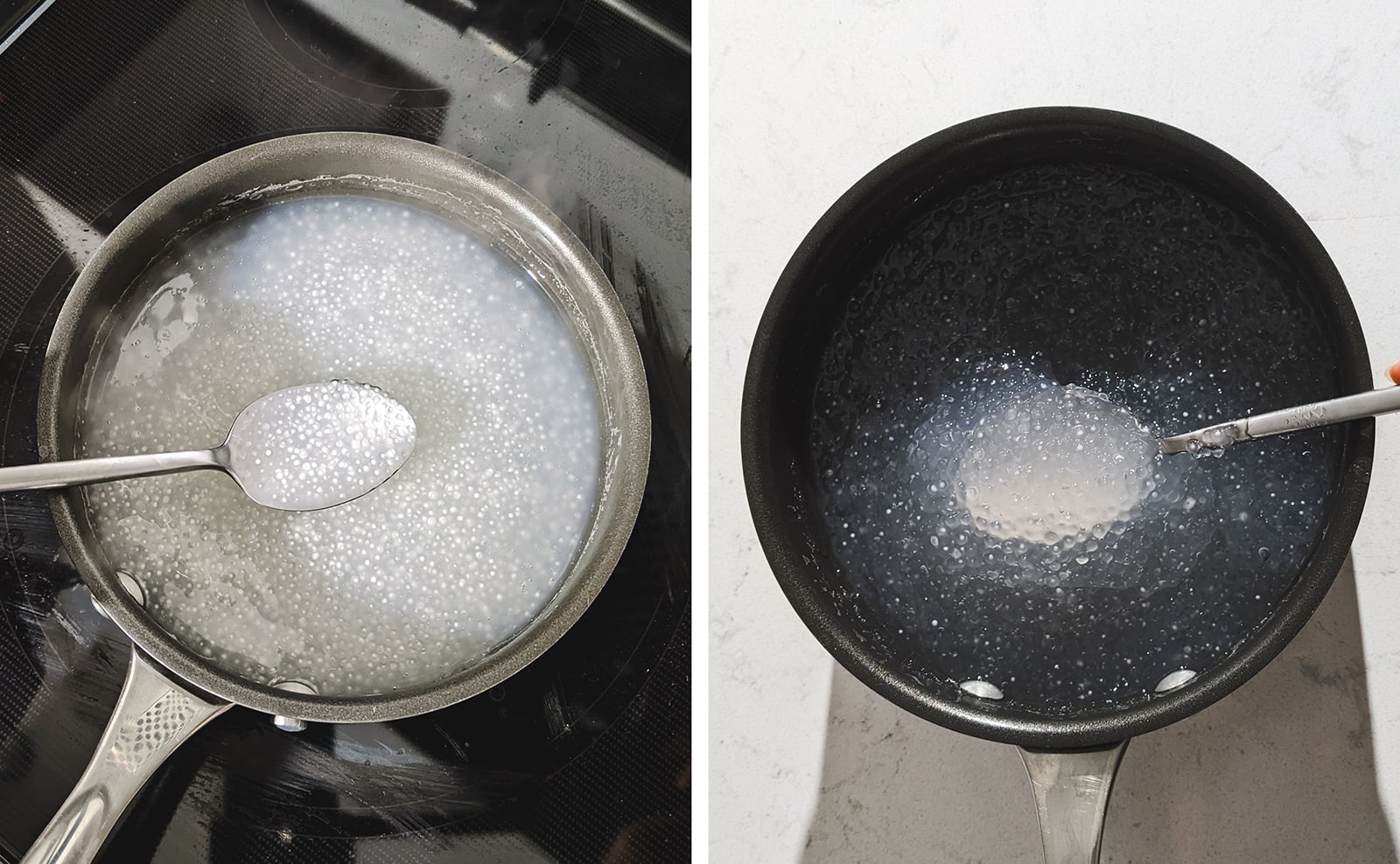
Blend the mango mixture - In a blender, add the mango chunks, coconut milk, and condensed milk. Blend until smooth. Taste and add more condensed milk if you’d like it sweeter.
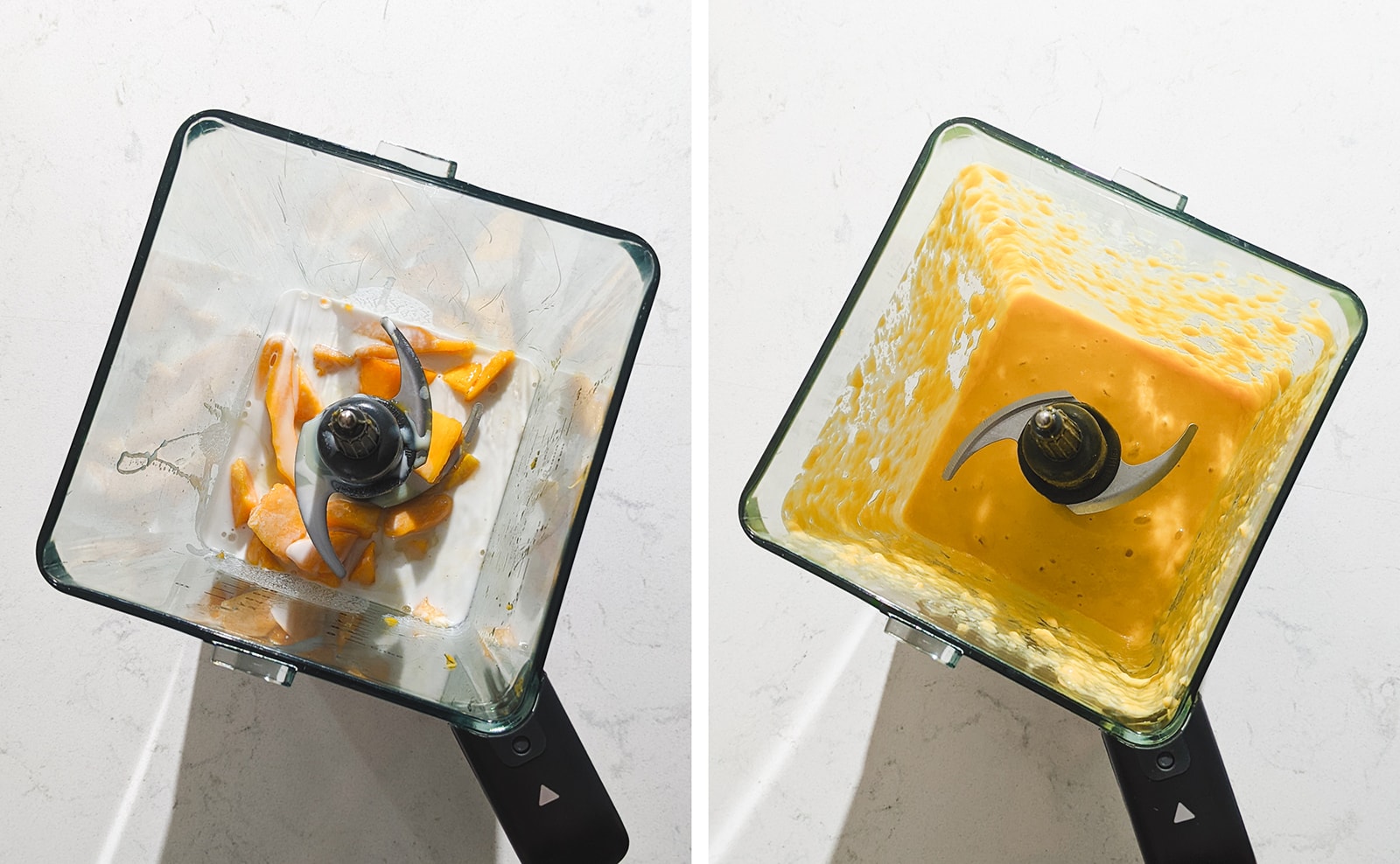
Mix everything together - Pour the mango mixture into a large serving bowl. Add in the drained sago and stir to combine. Serve the mango sago in small bowls or glasses. Garnish with more coconut milk and fresh mango chunks if desired.
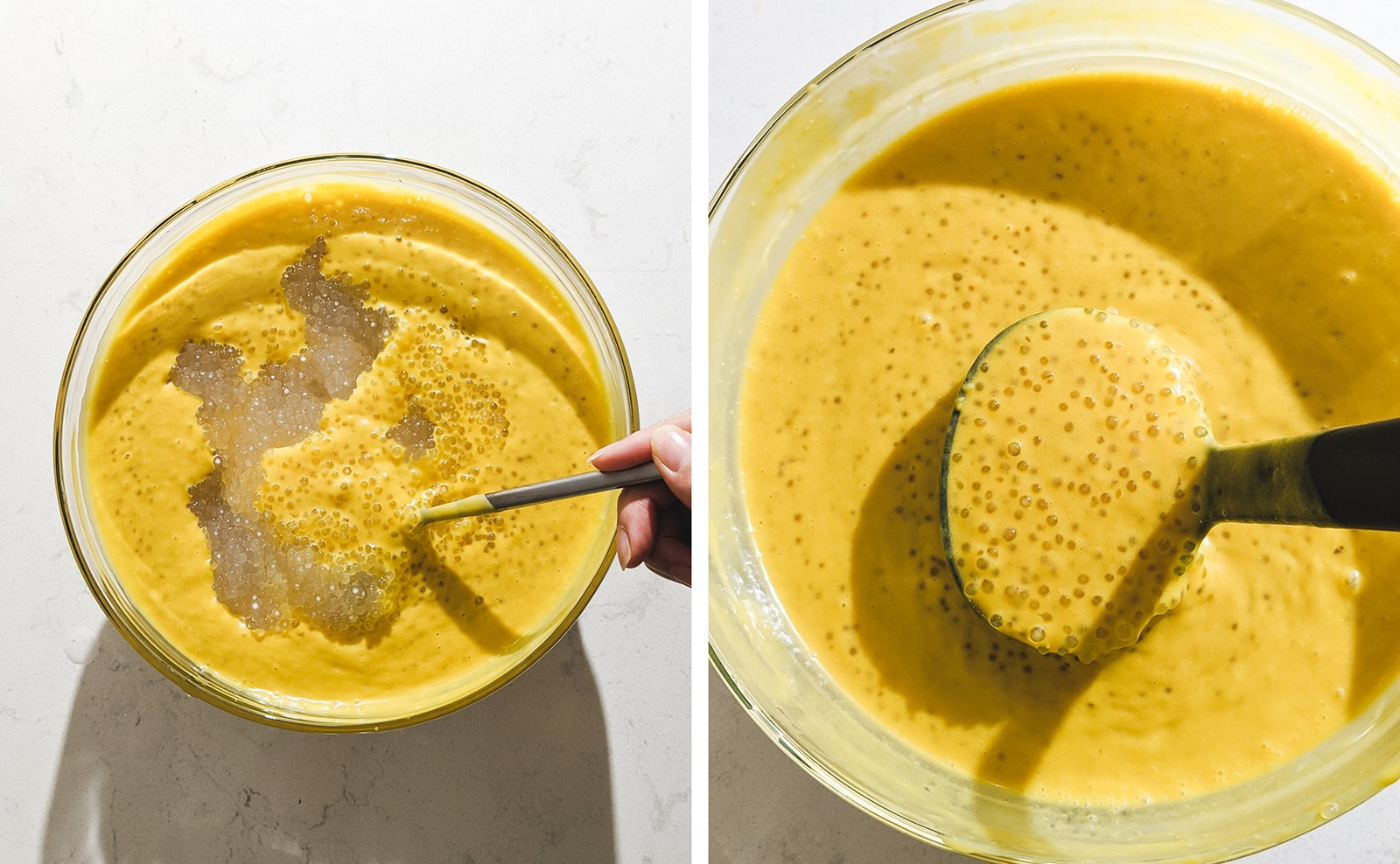
Storage
Mango sago is best served immediately. Leftovers can be stored in an airtight container in the fridge for up to 3 days.
Freezing
Mango sago does not freeze well as the texture of the tapioca pearls will change texture. It is best enjoyed on the same day or stored in the fridge only. Fortunately, it’s easy to make and easy to finish so you should never need to freeze it.
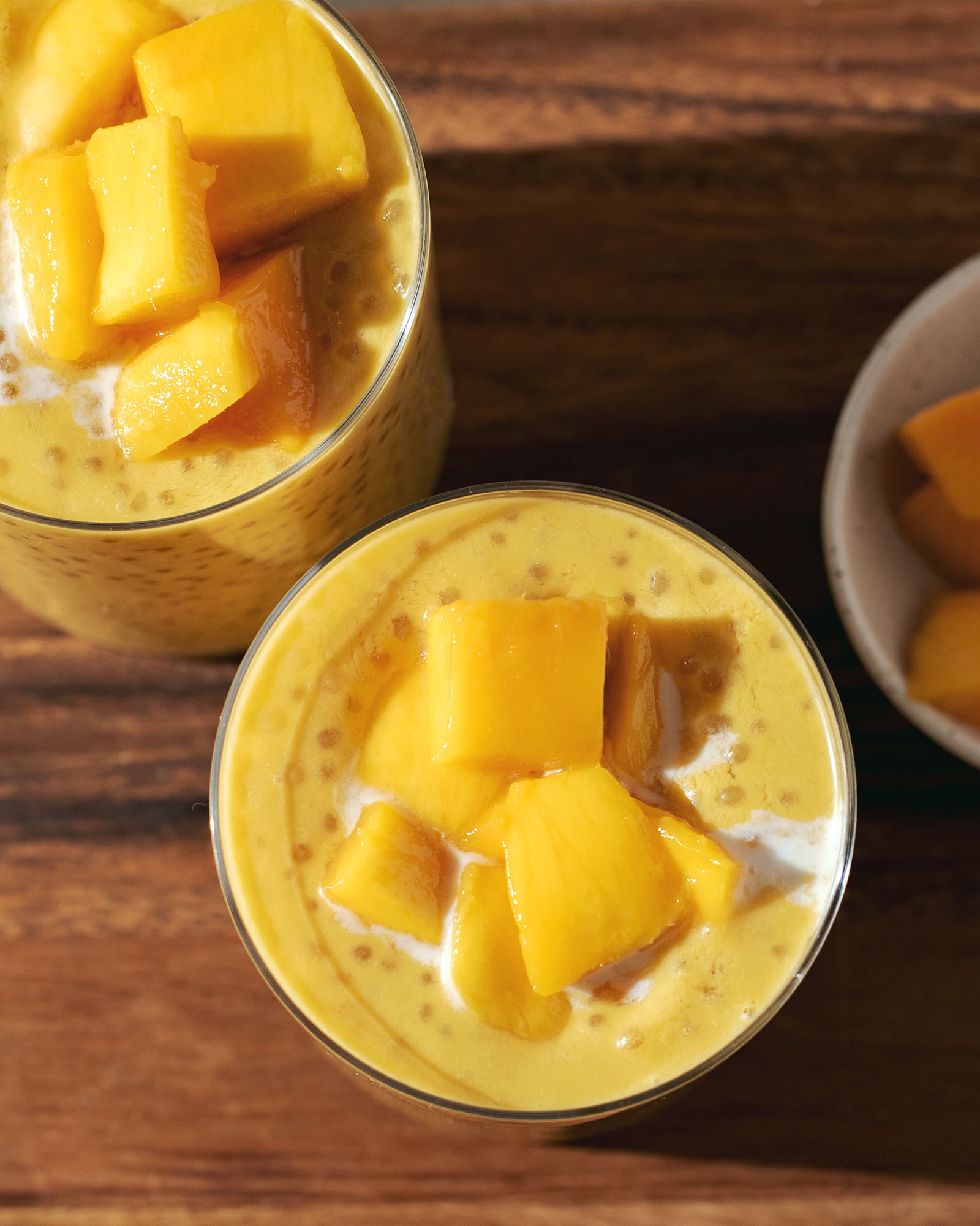
Tips & tricks
- Use more water to cook the tapioca pearls than you think you need. When cooked, tapioca pearls release a lot of starch into the water and can make it very thick and gelatinous if there isn’t enough water. I would recommend using a large-medium sized pot filled almost full of water for this amount of tapioca pearls.
- Keep the tapioca pearls submerged in cold water until you’re ready to use them. This helps maintain their texture and prevents them from sticking together. Don’t forget to drain them before adding them to the mango mixture.
- Chill the mango mixture to serve cold. If you’d like to serve this mango sago cold, chill the mango mixture in the fridge before adding the tapioca pearls. You could also blend the mango mixture with a handful of ice.
- Serve in a glass as a drink. Mango sago is typically served in a small bowl with a deep spoon but you can also enjoy it as a drink! Sago is often added to bubble tea or boba drinks so this is basically the same thing. Add some ice and don’t forget to use a large bubble tea or smoothie straw that can fit the tapioca pearls.
Frequently asked questions
After draining the cooked sago, rinse them with cold water to stop the cooking process. Fill a bowl or the same pot you cooked them in with cold water and keep the sago submerged in the water until you’re ready to use them. Stir them occasionally during cooking and afterwards to prevent them from clumping. Use them as soon as possible.
You can make this recipe vegan by omitting the condensed milk and adding granulated sugar to taste.
More mango recipes to try
Recipe
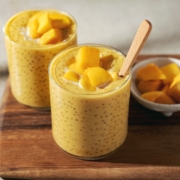
Mango Sago
Ingredients
- 200 g small tapioca pearls
- 600 g mango chunks (about 5 small mangoes)
- 400 g coconut milk (1 can)
- 50 g sweetened condensed milk
Instructions
- Bring a large pot of water to a boil. Add in the sago and stir immediately. Lower the heat to a simmer and cook sago for 10 minutes. Remove from heat, cover, and let sit for 10 minutes until the sago becomes completely translucent throughout.
- Pour the cooked sago into a fine mesh sieve to drain away the water. Fill the same pot with cold water and place the sieve on top. Keep the sago submerged in cold water until ready to use.
- In a blender, add the mango chunks, coconut milk, and condensed milk. Blend until smooth. Taste and add more condensed milk if you’d like it sweeter.
- Pour the mango mixture into a large serving bowl. Add in the drained sago and stir to combine.
- Serve the mango sago in small bowls or glasses. Garnish with more coconut milk and fresh mango chunks if desired.

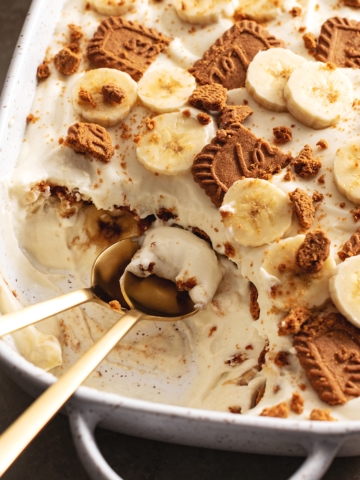
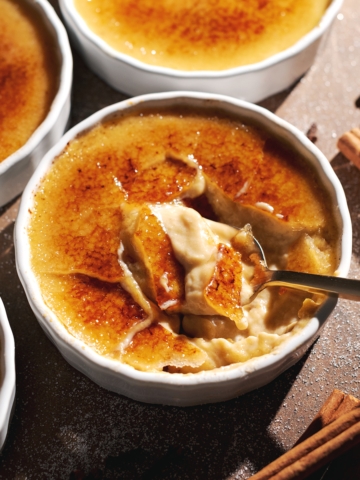
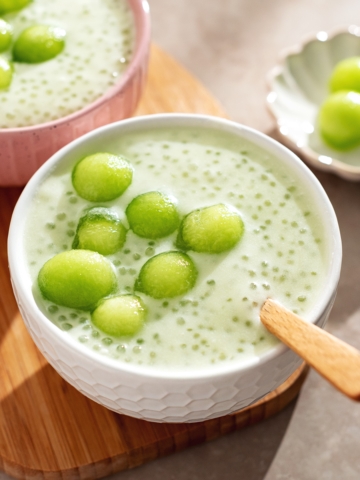
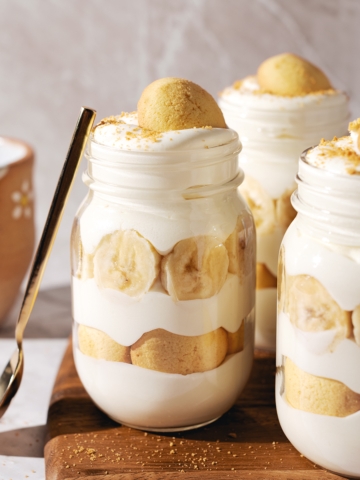
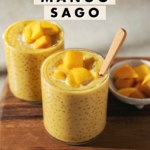
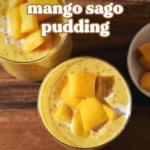
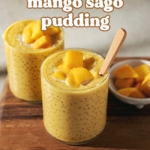
Rachel Dawson
The Mango Sago recipe is the best one! Easy to follow and concise. The combination of fresh mango and sago pearls made every bite burst with flavor. I would highly recommend this recipe to anyone who is looking for a simple yet delicious dessert!